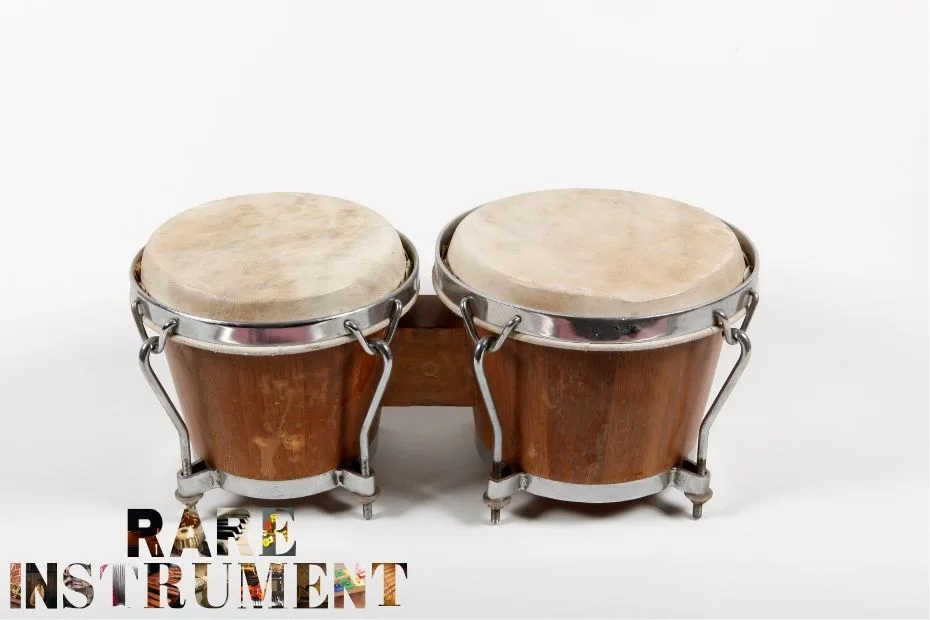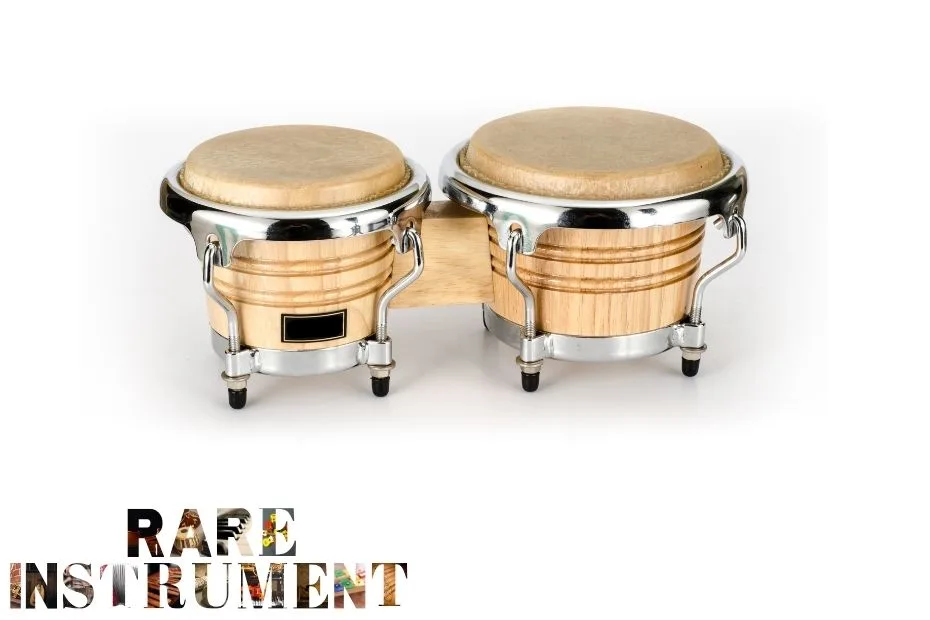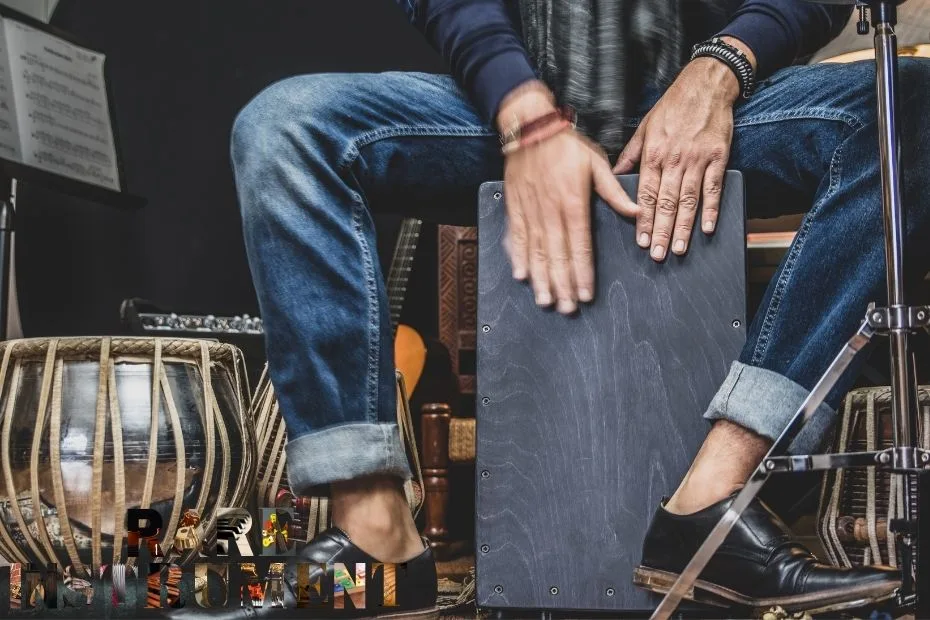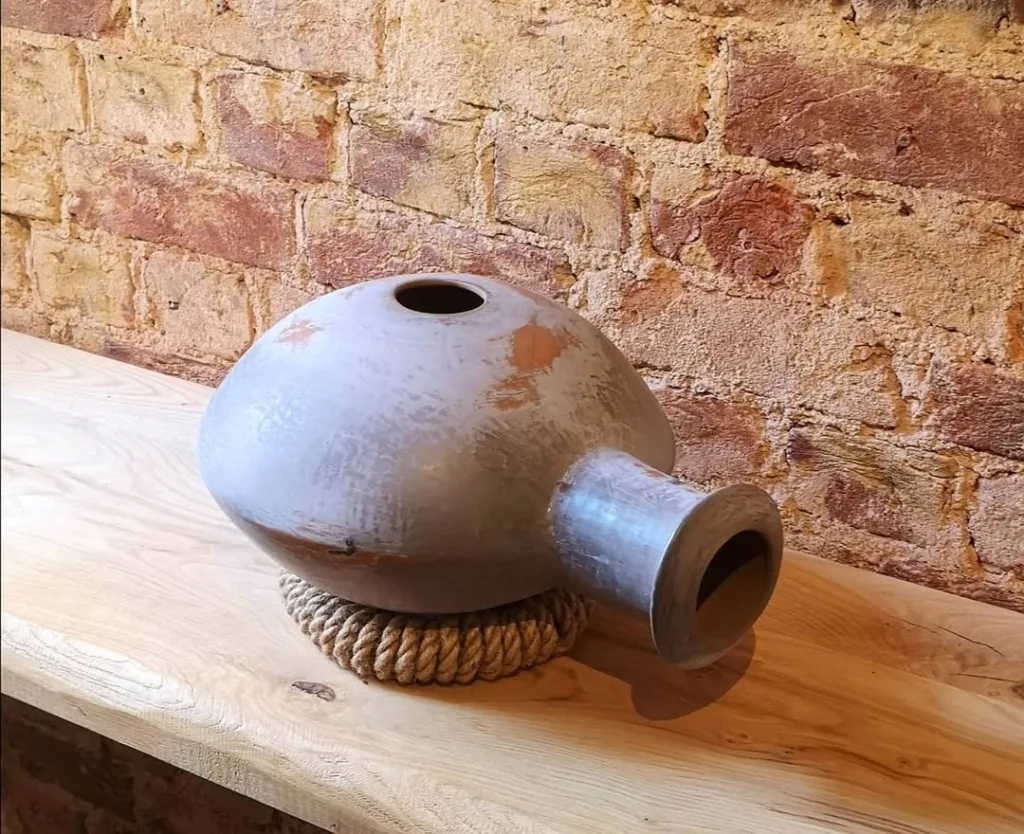Bongos: The Agile Heartbeat of Afro-Cuban and Latin Music
At-a-Glance Specifications
| Feature | Details | Performance Notes |
|---|---|---|
| Origin | Eastern Cuba (Oriente) — son cubano & changüí traditions | Developed in Afro-Cuban contexts; spread globally via Latin dance bands and jazz |
| Construction | Two small single-headed drums joined: macho (smaller) + hembra (larger) | Shells in wood or fiberglass; heads in natural skin or synthetic |
| Typical Sizes | Macho ≈ 6–7″ diameter; Hembra ≈ 7–9″ | Deeper shells = more body; smaller diameters = brighter attack |
| Tuning | Mechanical lugs (modern) or tacked/rope (vintage) | Macho tuned higher than hembra; aim for clear pitch + crisp slap |
| Core Role | Timekeeping & dialogue with tumbao/clave via the martillo pattern | Switches to bongo bell (campana) in montuno sections for projection |
| Ergonomics | Played between the knees; angled toward the player | Light shells reduce fatigue; rounded bearing edges = comfort + tone |
From Oriente to the World: History & Cultural Pathways
Emerging in eastern Cuba, the bongos took shape within son cubano and related rural styles like changüí. By the early 20th century they migrated to Havana’s dance halls and then to New York, where Latin orchestras and jazz groups embraced their agile voice. Bongo parts fused African rhythmic sensibilities with Iberian melodic forms, becoming the bright, talkative counterpoint to bass and tres guitar.
While the instrument itself isn’t singled out by UNESCO, the wider Afro-Cuban tradition around it is. UNESCO’s safeguarding of practices like Rumba cubana and other Cuban musical expressions affirms the cultural ecosystem that nurtured the bongo’s language—an ecosystem where call-and-response, community dance, and percussion dialogue are central to identity and memory.
How Bongos Are Built—and Why It Matters
Shells & Heads
Classic sets use staved hardwood shells (oak, ash, mahogany) with natural skin heads for warmth and articulation. Modern touring players may prefer fiberglass for durability and volume. Synthetic heads offer climate stability, but many pros still choose natural skin for its nuanced slap and open tone.
Hardware & Bearing Edges
Contemporary lug hardware enables precise tuning—vital when performing with horns and piano. Smooth, slightly rounded bearing edges protect hands and enhance resonance. Look for solid center block construction to avoid energy loss between the two drums.
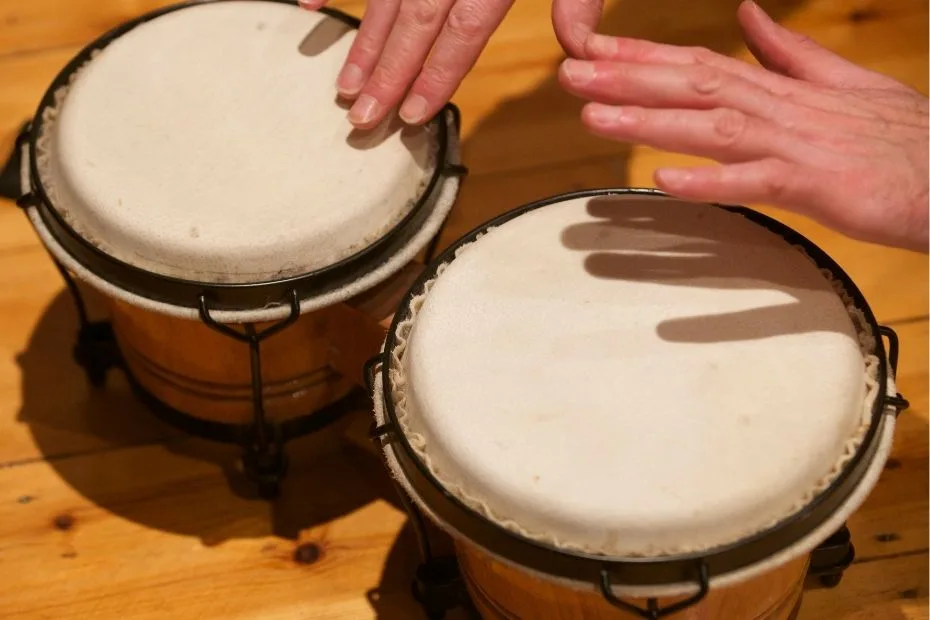
Essential Terminology
- Macho / Hembra: Smaller/higher vs. larger/lower drum pairing.
- Martillo (“the hammer”): The foundational time-keeping pattern.
- Bongo bell (campana): Handheld cowbell used by the bongosero during high-energy montuno sections.
- Open tone, slap, heel-tip: Core stroke types shaping groove and articulation.
- Clave: Underlying two-bar rhythmic key (2-3 or 3-2) guiding phrase structure.
Technique: Making the Martillo Speak
Hand Mechanics
The classic martillo interlocks heel-tip motions on hembra with slaps and ghost notes on macho. Keep wrists loose and angle the drums slightly to reduce strain. Think of the part as conversational time: it locks the groove while leaving space for the singer and horns.
Dynamic Conversation
As the band hits the montuno, the bongosero often picks up the bongo bell for cutting syncopations that lift the dance floor. Back in the verse, return to softer martillo with controlled slaps. The art lies in dynamic contrast and tasteful fills that complement, not crowd, the clave.
Practical Guidance for Players
Tuning & Setup
- Tune macho noticeably higher than hembra; listen for a clean “pop” on slaps and a round “o” on open tones.
- Moisten natural heads sparingly in dry environments; avoid direct heat sources that can over-tighten and crack the skin.
- Angle the set toward your body; keep knees close to stabilize without choking resonance.
Recording & Live Sound
- Place a small-diaphragm condenser ~15–20 cm off center of the hembra; add a second mic over the macho if needed for slaps.
- Use gentle compression; preserve transient attack for articulation.
- In loud bands, spot-mic the bongo bell to cut through without over-EQing the drums.
Styles & Repertoire: Where Bongos Shine
Bongos are indispensable in son, salsa dura, mambo, boogaloo, and Latin jazz. In dance bands, the bongosero weaves around piano montunos and bass tumbao; in small acoustic ensembles, subtle martillo and rim textures add intimacy. Outside Latin contexts, pop and world artists use bongos for bright accents and hand-played sparkle.
Notable Bongoseros & Listening Trail
A short lineage to explore:
- Jack Costanzo (“Mr. Bongo”): A key figure in popularizing bongos in North American jazz and film studios.
- José Mangual Sr.: With Machito’s orchestra, set gold standards for time and taste.
- Armando Peraza: Brought Afro-Cuban fire to jazz, rock, and fusion settings.
- Richie Bastar (El Gran Combo): Modern salsa phrasing and bell work.
Practice Roadmap (From First Groove to Bandstand)
- Internalize clave (both 2-3 and 3-2); clap it, sing it, then overlay martillo.
- Develop heel-tip endurance on hembra; add controlled slaps on macho.
- Learn cáscara-style bell figures; practice seamless switches between drums and bongo bell.
- Transcribe fills from masters; keep phrases inside the clave grid.
Buying Guide: What to Look For
- Fit & finish: Smooth bearing edges, sturdy center block, even lug action.
- Shell choice: Wood for warmth and classic feel; fiberglass for road-ready volume and consistency.
- Heads: Natural skin for nuanced tone; synthetics for stability. Consider a spare macho head for touring.
- Ergonomics: Weight and rim comfort matter for long sets.
Hear the Sound (Acoustic Examples)
Classic martillo tutorial and performance examples—paste as plain links so WordPress auto-embeds:
https://www.youtube.com/watch?v=PNg5w0yq3jU
https://www.youtube.com/watch?v=5N2rZ2ZsY8Q
A Living Pulse
From countryside changüí to NYC bandstands, bongos remain a compact engine of groove—nimble, expressive, and unmistakably bright. In the right hands, the martillo doesn’t just keep time; it tells the dance where to go next.
Reference

